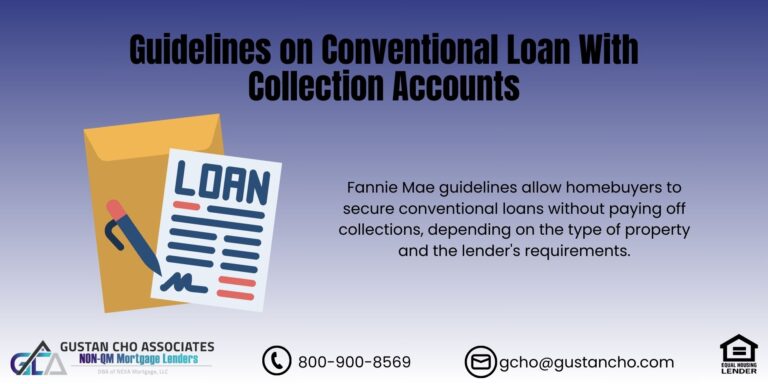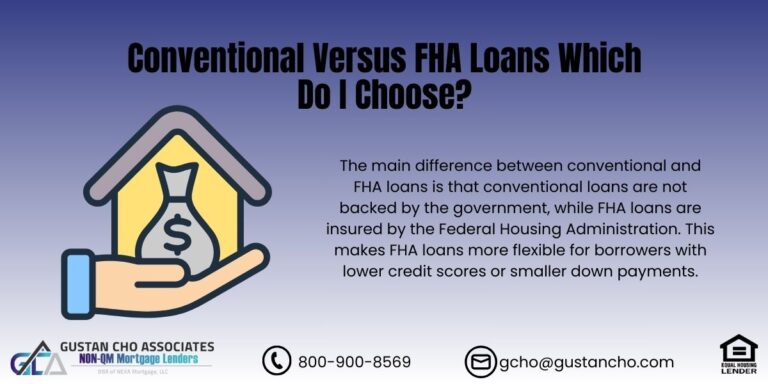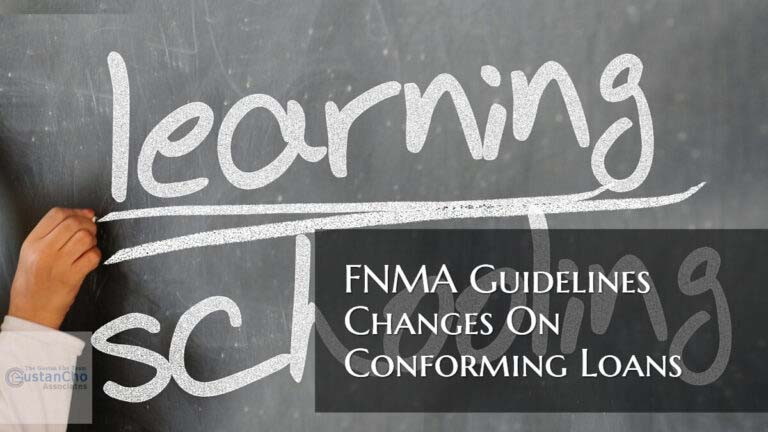Conventional Mortgage Guidelines And Requirements For Borrowers
This article covers Conventional Mortgage Guidelines And Requirements For Borrowers
A conventional loan is a residential home loan that conforms to Fannie Mae and Freddie Mac mortgage lending standards and guidelines. Lenders need to meet Conventional Mortgage Guidelines in order for them to sell loans they originate and fund on the secondary market to Fannie Mae and/or Freddie Mac.
- Fannie Mae stands for the Federal National Mortgage Association
- Freddie Mac stands for the Federal Home Loan Mortgage Corporation
- Both Fannie Mae and Freddie Mac are Government Sponsored Enterprises
- Government Sponsored Enterprises is also known as GSE
- Entities such as Fannie Mae and Freddie Mac that are sponsored and backed by the federal government but are not part of the federal government
Function And Role Of Fannie Mae And Freddie Mac

Both the Federal National Mortgage Association ( FANNIE MAE ) and the Federal Home Loan Mortgage Corporation ( FREDDIE MAC ) do not directly offer residential mortgage loans to public customers. These two mortgage giants are not lenders:
- Fannie Mae and Freddie’s function to purchase mortgage loans that meet Conventional Mortgage Guidelines
- Mortgages that meet Conventional Mortgage Guidelines originated by banks, credit unions, mortgage bankers, and financial institution mortgage lenders are purchased by Fannie/Freddie
- Banks, credit unions, mortgage bankers, and institutional mortgage lenders initially use their own warehouse line of credit to fund residential mortgage loans to public customers
- Once they use up their warehouse line of credit, they package these loans up to and re-sell them on the secondary market
- Federal National Mortgage Association ( FANNIE MAE ) and to the Federal Home Loan Mortgage Corporation ( FREDDIE MAC ) purchases loans that meet Conventional Mortgage Guidelines
After the banks, credit unions, mortgage bankers, or institutional lenders sell the mortgage loans in their portfolio to Fannie Mae and to Freddie Mac, they can still service the mortgage loans they have sold.
Fannie Mae And Freddie Mac Conventional Mortgage Guidelines
In order to qualify for a conventional loan, borrowers need to meet conventional mortgage guidelines and standards of Fannie Mae or Freddie Mac.
- Fannie Mae has its own guidelines and Freddie Mac has its own set of lending guidelines
- Conventional lenders all adhere to Fannie Mae and/or Freddie Mac conventional mortgage guidelines
- Lenders do not intent in keeping the mortgage loans they fund
- They package up all of the mortgage loans they fund and bundle them up and re-sell them to the secondary market to Fannie Mae or Freddie Mac
- All loans they originate and fund must conform to conventional mortgage guidelines of the two giant Government Sponsored Enterprises (GSE)
- If loan file does not meet conforming guidelines of Fannie Mae or Freddie Mac, it means that it does not conform
- They will not be able to re-sell the loan and must keep it in their books
Lenders do not want to keep the loans they fund because it ties up their warehouse line of credit.
What Credit Scores And Debt To Income Ratios Are Required To Qualify For A Conventional Loan?
Fannie Mae and Freddie Mac have minimum credit score and debt to income ratio requirements to qualify for a conventional loan.
- Debt to income ratios are the amount of all minimum monthly payment of borrowers divided by the gross monthly income
For example, here is a case scenario:
- total monthly minimum payments are $1,000
- monthly gross income is $3,000
- the debt to income ratio for the borrower is 33% which is the result of $1,000 divided by $3,000
- Maximum debt to income ratio allowed for both Fannie Mae and Freddie Mac conventional loan lending guidelines is capped at 50%
- Debt to income ratios is often referred to as DTI
Minimum Credit Score Guidelines On Conventional Loans

Fannie Mae and Freddie Mac also have set minimum credit score requirements to qualify for a conventional loan.
- Minimum credit scores required to qualify for a conventional loan is 620
- However, a 620 credit score is considered a very low score by lenders
- Just because borrowers have 620 credit score does not mean every lender will take a mortgage application
- Many lenders have something called mortgage lender overlays
- Mortgage lender overlays are lender’s own set of guidelines and standards that are above and beyond the minimum Fannie Mae and/or Freddie Mac’s conventional mortgage guidelines
- Lenders are allowed to set their conventional mortgage guidelines that have higher standards than Fannie Mae and/or Freddie Mac
- There are many instances where lenders may require a minimum credit score of 680 or higher
- This is the case even though the minimum credit score required by Fannie Mae and Freddie Mac is 620
- Conventional loans are credit-sensitive
- The lower borrowers credit scores are, the higher mortgage rates will be
Those with credit scores of 740 or higher will be eligible for the best mortgage rates.
Types Of Conventional Loans And Down Payment Guidelines
Conventional loans are available for owner occupant primary residence properties, second homes, and investment homes.
- For owner occupant primary residence homes (single-family only), the minimum down payment required is 5%
- First time home buyers can qualify for conventional loans with 3% down payment
- First time home buyers are defined as home buyers who had no ownership on home for the past three years
- This includes single-family homes, townhomes, and warrantable condominiums
- Warrantable condominiums are condo units that 51% or more of the condo unit owners are owner-occupants
Non-Warrantable condominium units are condo units where 51% or more condominium units are rentals and investor-owned.
Conforming Guidelines On Second Homes
To qualify for a conventional loan for a second home, borrowers need a minimum of 10% down payment.
- The second home purchase needs to be at least 60 or more miles from the primary home owner-occupant residence
- Or it needs to be located in a resort area like a golf course, beachfront or waterfront property
- A second home buyer cannot qualify for a second home that is down the street from the primary home that is similar in price or square footage
In cases like this, it will be classified as an investment home.
Conventional Guidelines On Investment Homes

To qualify for a conventional loan for an investment home, borrowers need to put at least a 20% down payment.
- If the investment home buyer needs to use 75% of the potential income of the investment home to qualify the income towards their debt to income calculations, a 25% down payment is required
Mortgage Insurance
Any down payment of less than 20% down payment, mortgage insurance is required on all conventional loans. Mortgage insurance can be canceled once the loan to value falls to 78% LTV or if the loan to value falls to 80% loan to value, homeowners, can request to the mortgage lender and private mortgage insurance company to have the private mortgage insurance canceled.







